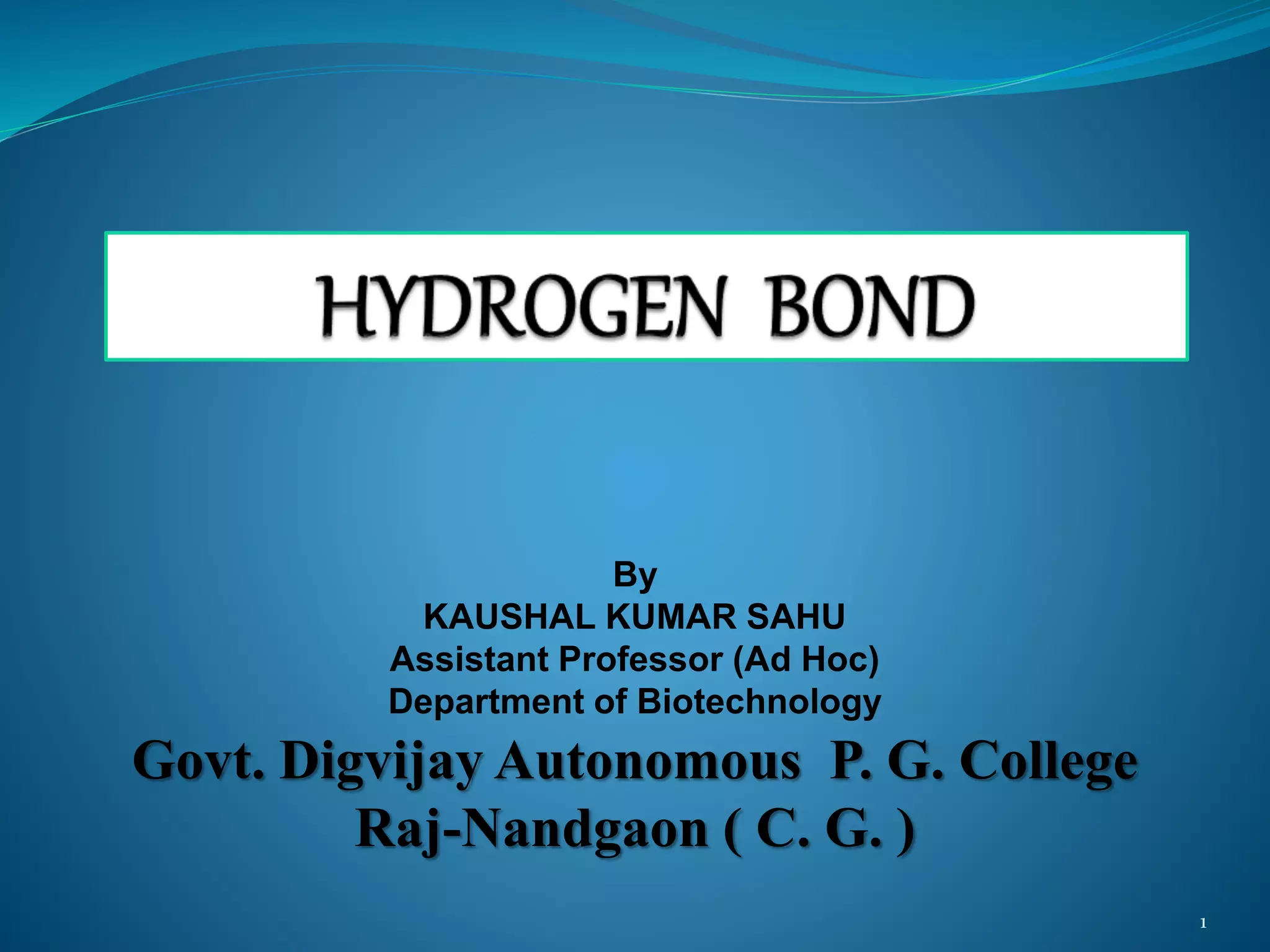The document discusses hydrogen bonding, describing its nature, types, and significance in various substances, such as water, alcohols, and biological macromolecules. It explains both intermolecular and intramolecular hydrogen bonds, their roles in determining physical properties like boiling points and structure in proteins and DNA. Additionally, the document covers advanced concepts such as symmetric hydrogen bonds and their implications in chemistry.













![ A symmetric hydrogen bond is a special type of hydrogen bond in which the
proton is spaced exactly halfway between two identical atoms.
The strength of the bond to each of those atoms is equal.
It is an example of a 3-center 4-electron bond. This type of bond is much
stronger than "normal" hydrogen bonds. The effective bond order is 0.5, so its
strength is comparable to a covalent bond. It is seen in ice at high pressure,
and also in the solid phase of many anhydrous acids such as hydrofluoric acid
and formic acid at high pressure.
It is also seen in the bifluoride ion [F−H−F]−.
Symmetric hydrogen bonds have been observed recently spectroscopically in
formic acid at high pressure .
Each hydrogen atom forms a partial covalent bond with two atoms rather
than one. Symmetric hydrogen bonds have been postulated in ice at high
pressure .
Low-barrier hydrogen bonds form when the distance between two
heteroatoms is very small.
14](https://image.slidesharecdn.com/1-200430160758/75/hydrogen-bond-2-by-KK-Sahu-sir-14-2048.jpg)





